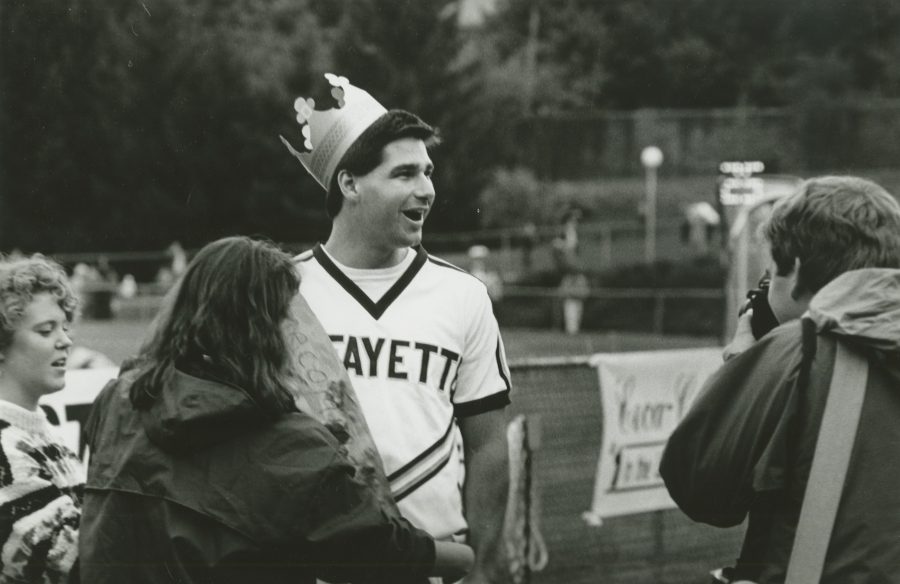One hundred and forty-three years after the first “impromptu” gathering in Pardee Auditorium on October 21, 1874, Lafayette College will once again be celebrating homecoming, previously known as “Founder’s Day.” This weekend continues an array of traditions that have evolved in purpose and spirit throughout the years.
The first Founder’s Day in 1874 was the first anniversary celebration of the dedication of Pardee Hall. Following the gathering of students and faculty in Pardee, the faculty passed a resolution which stated that the Wednesday following Oct. 21 would “be set apart forever by Lafayette College, its Faculty and students under the name of Founder’s Day,” according to “The Biography of a College” by David Bishop Skillman.
Around the same time, the college developed a cheer and colors that became important to the school’s spirit. However, it wasn’t until May 4, 1880 that Lafayette College Athletics Association formed and the athletic department at Lafayette began to organize in a serious way.
By fall 1881, Skillman reports that football came to occupy student attention “as never before.” Despite this, the college team never actually played other schools, but rather played amongst themselves with little-known rugby rules. The first Lafayette football team to play intercollegiate games was not formed until 1882.
The LCAA also took on the task of creating new traditions, and an 1886 invitation to Founder’s Day events included participation in the annual Fall Contest in Field Sports hosted by the LCAA.
1916 proved to be a pivotal year for this celebration when it took on a new meaning and became the assigned day for committees of alumni to come back to campus and make reports and suggestions to the president.
For the bi-centennial of the college’s original “impromptu gathering” in 1874, Founder’s Day in 1924 served as a celebration of both the city and school, including a nine-part pageant about their history.
Through the years, Founder’s Day continued to be an important day of celebration at the college, filled with sporting events and entertainment alongside the annual presentation of Honorary Degrees and awards. However, the day remained generally professional and focused on developing the school academically and as a community network.
Everything changed in 1969 as the balance of power between college administration and the Alumni Association shifted, according to Albert W. Gendebien in “The Biography of a College.”
“The college had been endeavoring to create a more intimate community with its alumni, inducing them to feel a more continuous, closer relationship with their alma mater, and to get more of them to identify themselves with it and participate in its ongoing operations and development,” he wrote.
It was for this reason that, in 1969, homecoming replaced Founder’s Day and Parent’s Day, formerly coinciding with Founder’s Day, was moved, Gendebien wrote. An alumni planning committee was formed who created the a pre-football game tailgate in the parking lot between Markle Hall and the football stadium that still takes place today.
However, the official date of the state of homecoming isn’t quite clear. The 1940 issue of The Lafayette calls the following Friday the “First Annual Homecoming” at the college, and an air-mail envelope from October 1946 invites alumni to campus for Alumni Homecoming on Nov. 2, 1946, commemorating the 120th anniversary of the founding of Lafayette with the first helicopter flight in Easton and the visit of future President of the United States, General Dwight D. Eisenhower.
History professor Bob Weiner has been on campus since 1967. He said he has witnessed a change in function and spirit throughout the years, but retains fond memories.
“[There’s] generally too much drunkenness,” he said. “However, I loved the old days, when faculty and students could share a civilized brew together.”





















































































































